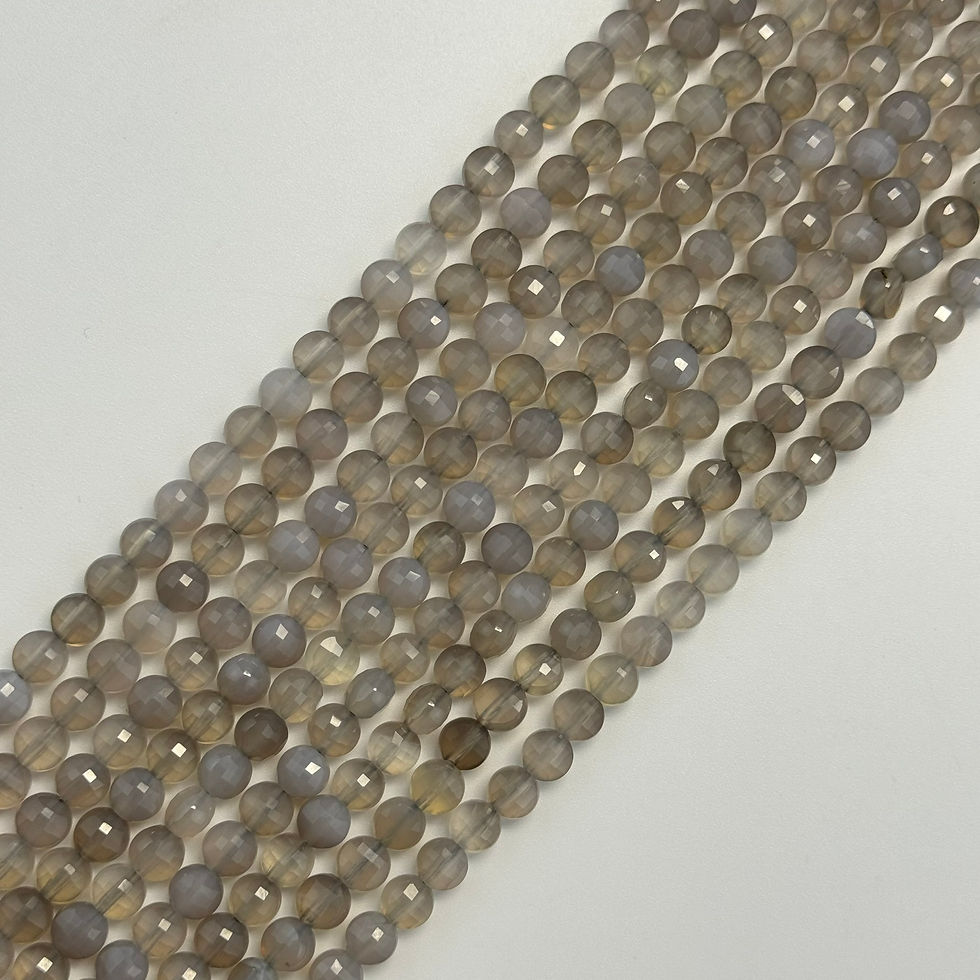Agate Gemstone Beads Collection
Blue Lace Agate Crystal Beads
Crazy Lace Agate Gemstone Beads
All our Agate Beads Collection
More About Blue Lace Agate Gemstone Beads
What are Blue Lace Agate gemstone beads?
Blue Lace Agate gemstone beads are a variety of banded chalcedony known for their soft blue color with delicate white lace-like patterns. Valued for their calming energy and smooth, polished appearance, they are popular in jewelry making and metaphysical practices.
Why are Blue Lace Agate gemstones becoming more popular?
Blue Lace Agate is gaining popularity due to its soothing blue tones, elegant banding, and strong associations with calmness and communication. As demand for natural, healing gemstones grows, its rarity and aesthetic appeal make it a sought-after choice for jewelry and energy work.
Is Blue Lace Agate a semi-precious or precious gemstone?
Blue Lace Agate is a semi-precious gemstone. It belongs to the chalcedony family, a variety of quartz, and is valued for its delicate blue hues and intricate banding rather than extreme rarity or high market value like precious gemstones (diamond, ruby, sapphire, and emerald).

More About Crazy Lace Agate Gemstone Beads
Why are Crazy Lace Agate gemstone beads called "Crazy"?
Crazy Lace Agate gets its name from its intricate, swirling patterns and vibrant color variations, which create a "crazy" or chaotic appearance. This unique banding, often in shades of red, yellow, white, and brown, makes each bead visually striking and highly sought after for jewelry and metaphysical uses.
Where is Crazy Lace Agate found, and when did it become popular?
Crazy Lace Agate is primarily found in Chihuahua, Mexico, and has been used for centuries by indigenous peoples. Its name and popularity grew in the lapidary and gemstone trade during the mid-20th century as interest in uniquely patterned agates increased.
What does "lace" in Crazy Lace Agate Crystal Beads mean?
The word "lace" in Crazy Lace Agate refers to the intricate, swirling, and banded patterns that resemble delicate lacework. These natural formations create unique, flowing designs in shades of red, yellow, white, and brown, giving the stone its distinctive, decorative appearance.





































































